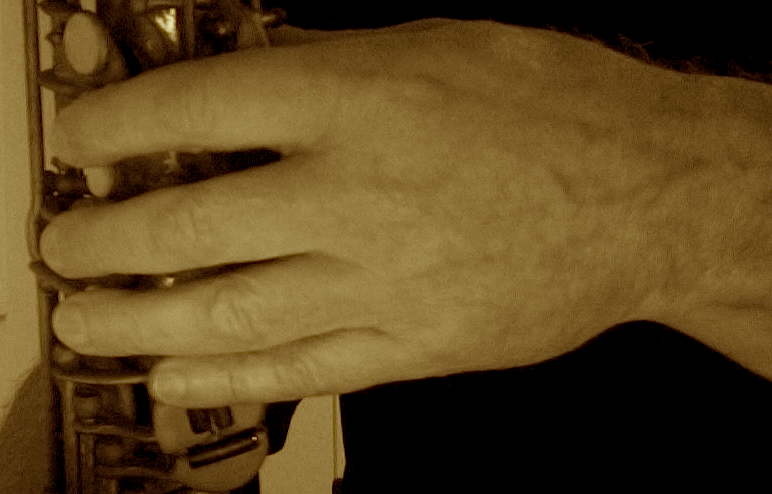Many highly skilled and accomplished musicians have lots to say about efficiency in playing their particular instrument.
Whether it is about what the hands/fingers should (or shouldn’t do), or the arms and legs, or how any particular part of the oral mechanism involved in playing functions optimally, there seems to be no shortage of opinions about how to play without “wasting effort”.
And I have my opinions, too, of course, which are based upon my experience teaching the Alexander Technique to musicians, coupled with my growing knowledge and explorations of anatomy and neuroscience.
One of the ideas that can cause considerable problems for some of the musicians who come to me for help, is “economy of movement”.
In playing saxophone, for example (the instrument I play), there are those who advocate this concept: “To move your fingers with the greatest amount of speed, you need to move them as little as possible to raise and lower the keys.”
On the surface, this seems like a good idea. It’s kind of variation on the “shortest distance between two points is a straight line” concept. It obviously takes less time to move a shorter distance than a longer one, all other things being equal.
I describe this concept (in reference to what I’ve written above) as “economy of movement”.
So what are the potential problems with this?
Well, for many musicians, this attempt to limit movement can often begin to manifest itself as stiffness and rigidity.
Not just stiffness and rigidity in the specific parts of the body involved in carrying out the movement, but in the entire organism itself: stiff neck, shoulders, jaw, knees, ribs and more.
And with this comes yet another form of “stiffness and rigidity” as well. Specifically, in the cognitive functioning of the musician.
I describe this as the “deer in the headlights” syndrome. In the focus to “limit” the movement often comes the narrowing of the focus of attention in general. Not a good thing, as this tends excludes and disintegrate (rather than include and integrate) the various experiential elements necessary to play optimally.
So instead of thinking “economy of movement“, I encourage the musicians I work with to begin to think more in terms of “economy of effort“.
Now, to be clear, I’m not necessarily advocating less effort (as that in itself can have the same negative unintended consequences of “less movement”).
More specifically, what I am advocating is the “optimization of effort”. That simply means that the effort applied to the task of playing is directed in a way that is most conducive to the task itself.
It means that the effort you use to play your instrument is best directed when it’s based upon what you want (sound, time, articulation, etc.) in cooperation with design.
Design includes your human structure (and how it optimally functions), the acoustic principles of your instrument, as well as how your brain works to bring it all together to make music.
Playing with optimum effort means not forcefully using your neck muscles to do the work most suitable for your arms, for example. Or to not strain your jaw in doing the work better suited for your soft palate (when playing a wind instrument).
And sometimes you actually have to let something move more than you might think it needs to in order to optimize effort. Try walking sometime as you limit the movement of your ankles, and you’ll immediately realize that less movement isn’t always better movement. (This is analogous to not allowing your “MP”, or, “knuckle” joints to bend the way they need to if you try too hard to limit the movement of you fingers.)
One of the things I love most about the Alexander Technique is that it employs a clear set of principles that teach you how to recognize misdirected effort as you play music, or do anything else.
As you learn to recognize and prevent your habitual pattens of misdirected effort, you simply play better (and feel better, too!)
So consider replacing the idea of “economizing the movement” with “optimizing the effort”. Really explore the contrast between these two concepts. In doing so, you’ll open up a marvelous new world of possibilities for yourself.
